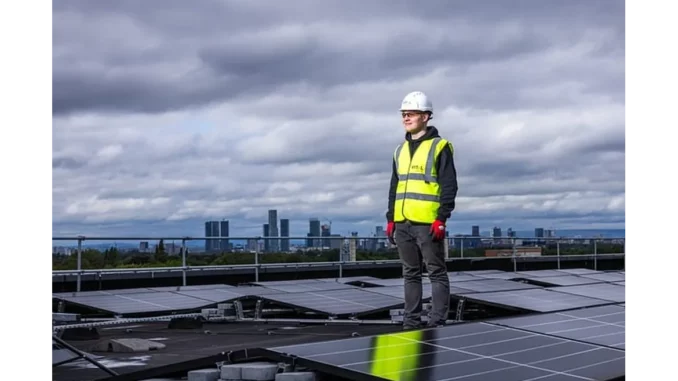
As 2024 draws to a close, the solar energy sector in the UK is experiencing unprecedented growth, particularly within the realm of new residential developments. The integration of solar photovoltaic (PV) panels into new homes has surged, with current statistics revealing that approximately 30% of newly constructed homes this year have adopted solar technology. This represents a substantial increase from previous years and is a testament to evolving consumer preferences, stringent energy efficiency mandates, and an overarching commitment to sustainability.
Successful low-energy building design hinges on careful planning. Focus360 Energy can help.
Central to this transformation are the revised ‘Part L’ energy efficiency regulations in England, which became fully effective in June 2023. These regulations have set a new benchmark for energy performance in new homes, actively promoting the inclusion of renewable energy sources like solar power. As a direct consequence, the number of new homes equipped with solar installations has more than doubled over a span of just twelve months. In the third quarter of 2024 alone, England witnessed the completion of 36,506 new homes, of which 10,720 were outfitted with solar panels. This equates to roughly 29% of the new homes, a stark contrast to the 13% reported in the final quarter of 2023. Projections indicate that this upward trajectory is likely to persist, with a higher proportion of new homes expected to feature solar technology by the end of 2025 as the regulatory transition concludes.
Chris Hewett, Chief Executive of Solar Energy UK, has emphasised the profound impact these regulatory amendments have had on the solar sector. While attention is often directed towards forthcoming standards such as the Future Homes Standard, it is essential to appreciate the role that current regulations play in stimulating industry expansion and mitigating both emissions and energy expenses for homeowners. Despite the rapid adoption of solar power, which has led to a reduction in the average capacity of solar systems, the trend remains robust. Previously, solar installations were largely influenced by local planning requirements or the preferences of self-builders, resulting in larger systems tailored to specific energy demands. In contrast, as private developers increase the volume of homes with solar PV, the average capacity has decreased from about 4 kilowatts at the end of 2023 to 2.8 kilowatts in the third quarter of 2024.
Nevertheless, the overall number of solar installations continues to climb. The UK now boasts over 1.6 million rooftops with smaller-scale solar installations, with England alone accounting for 1.3 million of these. This expansion is not confined to new homes; retrofit installations have sustained a steady pace, driven by persistently high energy prices, decreased installation costs, and heightened environmental awareness. In addition, the commercial-scale solar market is flourishing, though these installations are not captured in the Microgeneration Certification Scheme (MCS) figures. Notable projects, such as the 31-megawatt solar array announced at the Port of Liverpool, underscore the potential for large-scale solar initiatives.
Looking forward, the outlook for the solar energy sector in the UK appears promising. With increasingly stringent regulations on the horizon and a growing recognition of the advantages of renewable energy, the momentum towards solar-powered homes is anticipated to gain further acceleration. This progression not only aids in reducing carbon emissions but also represents a critical stride towards a more sustainable and energy-efficient future. The rise of solar power within new homes is emblematic of the UK’s steadfast commitment to renewable energy and sustainability. As the nation continues to embrace solar technology, it is paving the way for a cleaner, greener future where solar power assumes a central role in fulfilling energy requirements and minimising environmental impact. The solar industry, buoyed by regulatory support and growing public awareness, stands poised to make significant contributions to the nation’s energy landscape, ensuring both economic and environmental benefits for years to come.


Be the first to comment